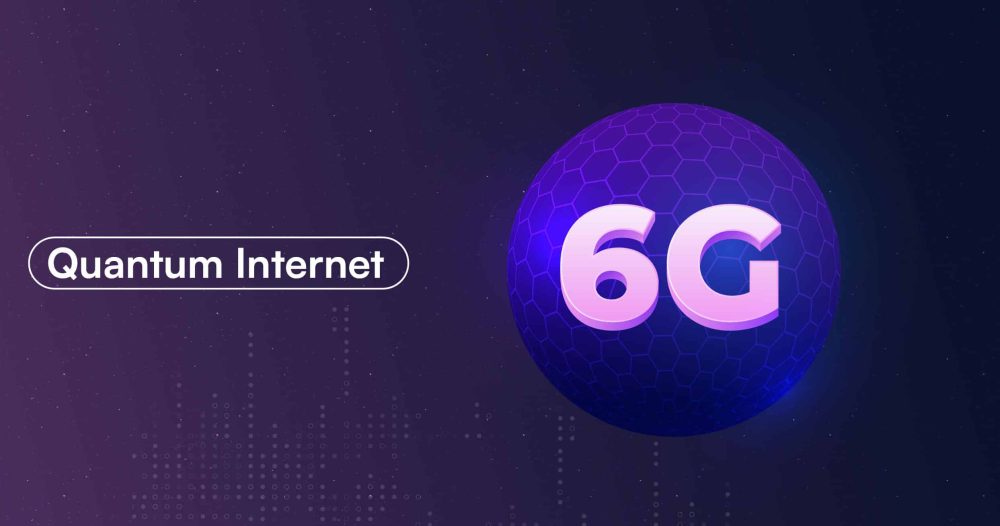As artificial intelligence races toward dominance and classical computing hits the ceiling of Moore’s Law, the next technological leap isn’t just faster—it’s weirder. Enter the quantum internet: a futuristic network that doesn’t transmit data as much as it teleports it.
Sounds like science fiction? It isn’t. It’s in development now, and it might fundamentally redefine how humans and machines communicate.
🧠 What Is the Quantum Internet?
Unlike today’s internet—which moves classical bits that are either 0 or 1—the quantum internet will distribute qubits. These are quantum bits that can exist as 0, 1, or both at the same time, thanks to a strange phenomenon known as superposition.
But the real magic happens with entanglement. When two qubits become entangled, the state of one instantly influences the state of the other, no matter how far apart they are. This allows for what’s called quantum teleportation: the transfer of quantum states without moving particles.
So no, your emails won’t arrive via wormhole. However, sensitive quantum information will travel across a distributed web of quantum devices with unbreakable encryption, instantaneous coordination, and completely new paradigms of computation.
🔐 Why Build a Quantum Internet?
1. Unhackable Communication
Using quantum key distribution (QKD), two parties can share encryption keys that, if intercepted, are automatically rendered useless—the very act of eavesdropping destroys the information. This is a nightmare for cybercriminals—and a dream for governments, banks, and health systems.
2. Distributed Quantum Computing
Quantum computers are notoriously fragile and expensive. A quantum internet could connect smaller quantum nodes into a distributed supercomputer, pooling entangled qubits across networks.
3. Ultra-Precise Synchronization
In GPS, finance, and defense, even nanoseconds matter. The quantum internet enables atomic-level time synchronization, vastly improving global coordination.
🚫 What It Won’t Do
Let’s debunk a myth: The quantum internet won’t replace the classical internet. It’s not meant for video streaming, gaming, or memes (yet). Instead, it’s a specialized infrastructure that will operate in parallel, providing layers of security and capabilities where they’re most critical.
Think of it like a private, invulnerable subnet for science, defense, and AI—not TikTok.
🔬 How Does It Work?
A complete quantum network needs:
-
Quantum Repeaters: To maintain entanglement over long distances.
-
Quantum Routers: To route quantum states without measuring them.
-
Quantum Memory: To store fragile qubits until they’re needed.
-
Entangled Photon Sources: The “messengers” of the quantum world.
All of this must function without ever observing the data directly, or else—poof—it vanishes. That’s the paradox and the promise of quantum systems.
⚠️ Current Challenges
The theory is sound. The engineering? Not so much (yet).
-
Qubits are Fragile: They decohere (fall apart) in milliseconds due to environmental noise.
-
Distance Is a Killer: Fiber-optic losses limit photon transmission to around 100–150 km without repeaters.
-
Quantum Repeaters Are Rare: And the few that exist are still prototypes.
-
Scalability Remains Elusive: Right now, most progress is happening in labs and limited testbeds, not across continents.
🌍 Who’s Building the Quantum Internet?
🇨🇳 China
China launched the Micius satellite in 2016, enabling satellite-based QKD and achieving the first intercontinental quantum communication. They’re now building a national quantum backbone across cities.
🇪🇺 European Union
The EuroQCI (Quantum Communication Infrastructure) project aims to create a secure quantum internet spanning all 27 EU countries, with support from Airbus, Thales, Orange, and national research centers.
🇺🇸 United States
The U.S. Department of Energy launched a 10-year quantum internet blueprint in 2020, focusing on labs like Argonne, Brookhaven, and Fermilab. DARPA, NASA, and private firms like AWS and IBM are investing heavily.
🌐 Global Cooperation
The Quantum Internet Alliance, a European-led initiative, aims to build the first functional network linking quantum processors in different cities—essentially a quantum version of ARPANET.
🤖 AI + Quantum Internet = The Next Frontier
Here’s where things get spicy.
When quantum networking matures, AI models can train and operate across distributed quantum systems, accessing exponentially greater computational depth. Combine that with federated quantum learning—training models without moving raw data—and you have a system that’s:
-
More secure
-
More powerful
-
Less centralized
This isn’t just a new layer of the internet. It’s a new dimension.
📅 When Will It Arrive?
Some experimental networks already exist:
-
China’s Beijing-Shanghai quantum backbone
-
The Dutch Quantum Internet Alliance testbed
-
Chicago Quantum Exchange test network
A small-scale quantum internet (national or continental) could become operational by 2030. Global scaling might take until the 2040s, depending on quantum repeaters and integrated photonics breakthroughs.
🤯 Why It Matters
When ARPANET launched in 1969, no one imagined Uber, Twitter wars, or a digital economy. The quantum internet will do the same, enabling tools and behaviors we haven’t even imagined yet.
It will redefine trust, elevate computation, and break the limits of what’s possible in AI, security, and science.
In my opinion, it’s not just an upgrade. It’s the first infrastructure built for an intelligent civilization—designed to connect people and link minds, machines, and realities.


